The Data
As all the testing in this round-up was performed with the exact same equipment, using the exact same methods I have decided to keep each radiators page uncluttered by posting our testing methodology, test set-ups and equipment used in a single location. To see exactly how the tests were carried out, details of the test set ups and equipment used, please head back to the RRU Test Setup page.
Restriction Test
It’s generally agreed that radiators are one of, if not the least restrictive components in the water cooling loop. There are some exceptions however, so this must still be verified through testing:
The above photo is for referencing the restriction test bench – the GTX is not loaded so please disregard the data in the picture as it does not relate to the its test results.
Here is the raw data at the tested flow rates, displaying the measured Differential Pressure across the radiator as flow rate was increased.
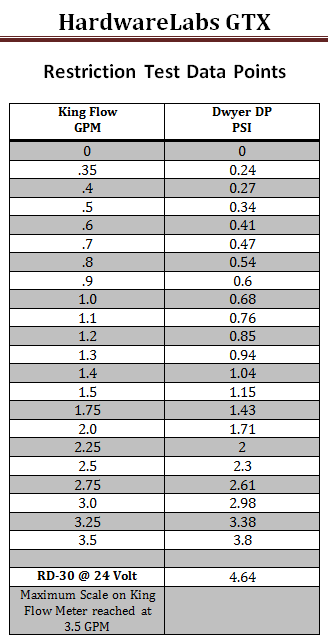 The table numbers indicate that the GTX is a high restriction radiator. However numbers in isolation can only tell half the story. By plotting against other components it more easily shows the whole story.
The table numbers indicate that the GTX is a high restriction radiator. However numbers in isolation can only tell half the story. By plotting against other components it more easily shows the whole story.
I have decided to use a HeatKiller 3.0 CPU block as the reference in these plots for two reasons. Firstly there is no chance of the plot being cluttered by curves overlapping and secondly it gives a reference point against a fairly common loop component of average restriction.
As with all the radiator restriction plots I have limited the maximum flow rate displayed to 2.0 GPM as I suspect there are very few systems that operate above 2.0 GPM. For more information on how to read a restriction plot check out our guide.
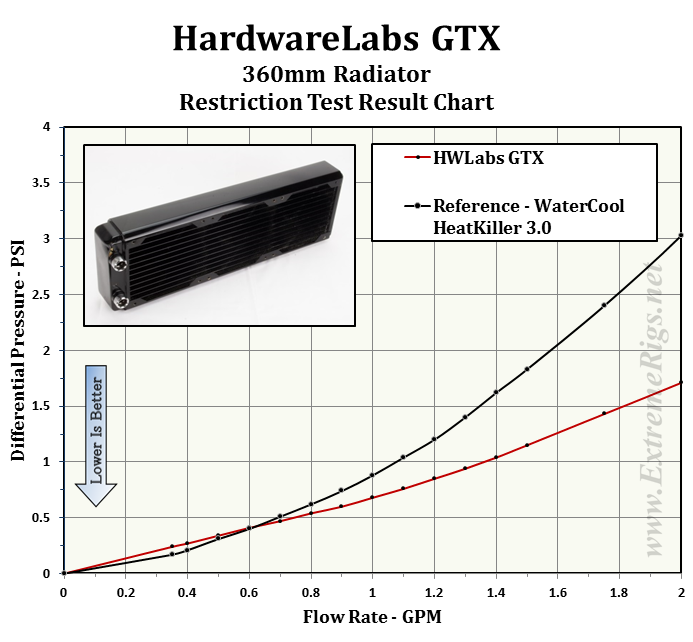 This plot confirms the GTX as a medium restriction component.
This plot confirms the GTX as a medium restriction component.
The next three plots show the GTX’s restriction level relative to other radiators in the test group. Previously I have only shown just the 1.0 gpm plot, but I have now decided to show 3 different flow rates for you to see how the rad’s restriction levels compare against each other at different flow rates.
So when compared to other 360mm radiators we have to call the GTX a high restriction rad. Therefore some planning of pump power required for your loop components should be considered.
Onwards to Thermal Performance!








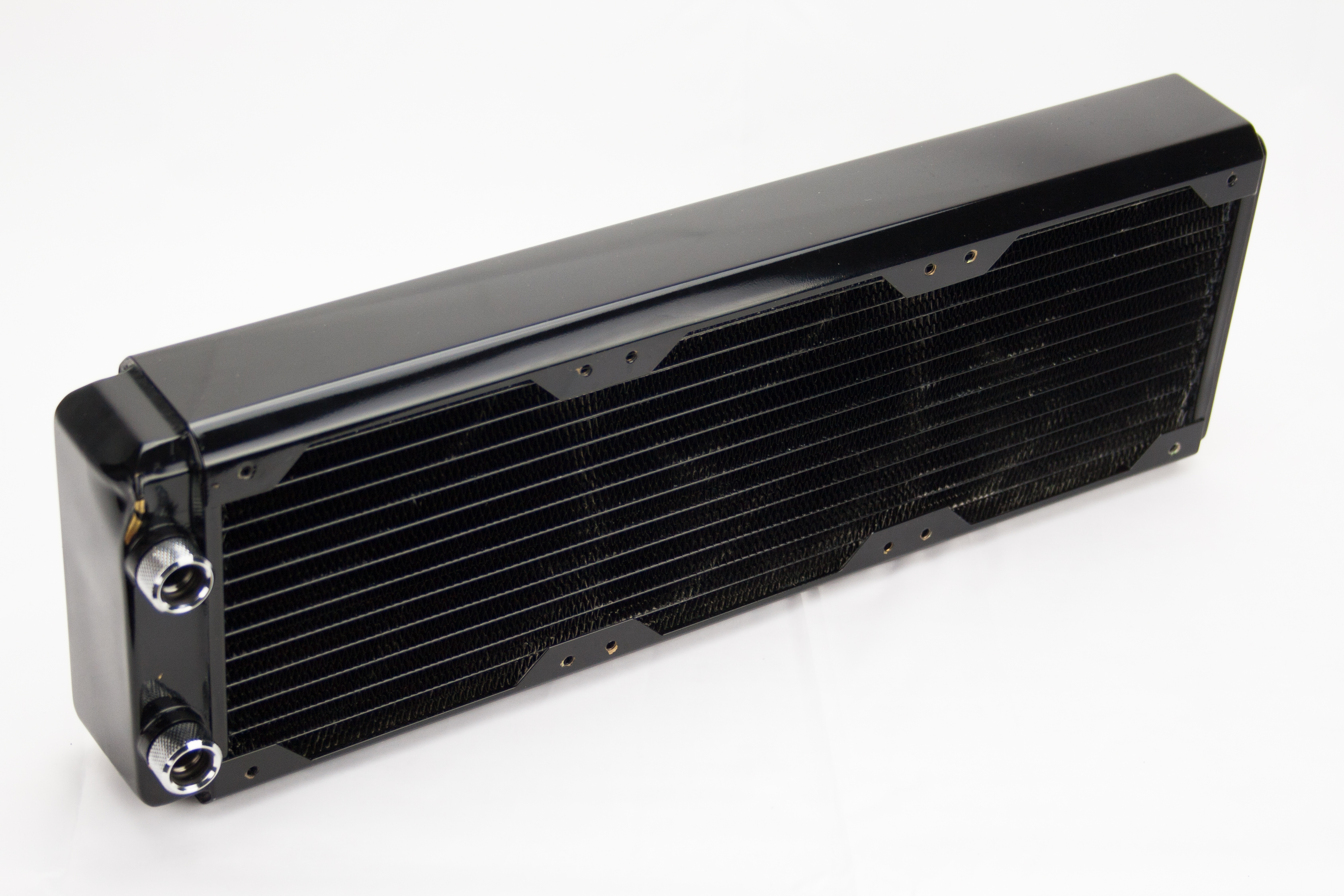
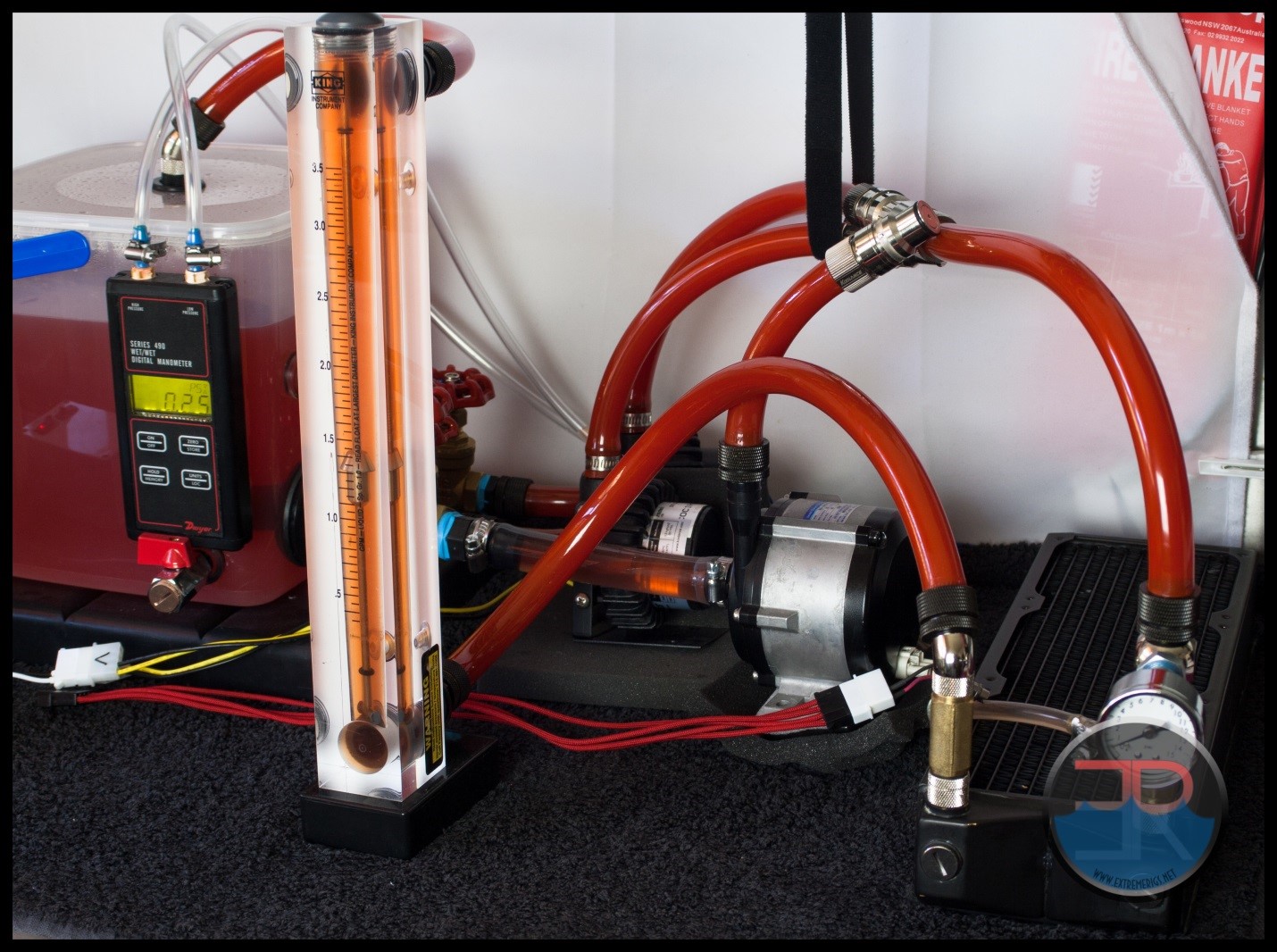
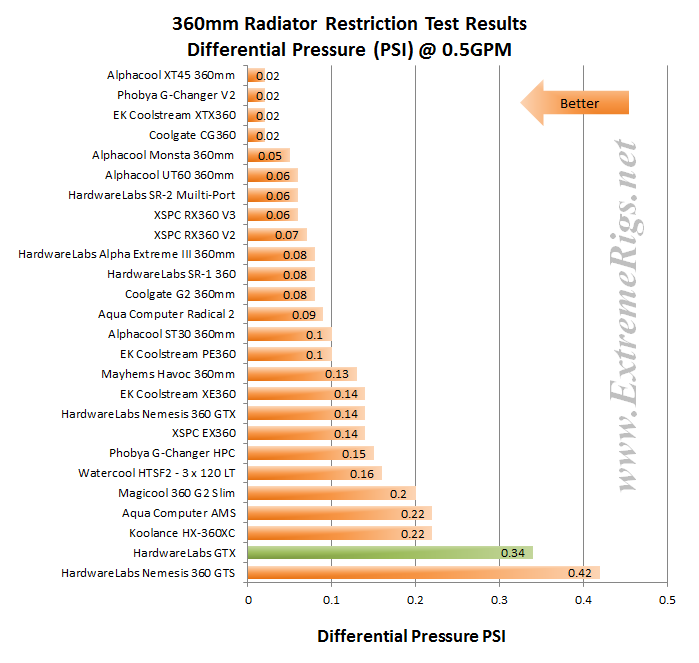
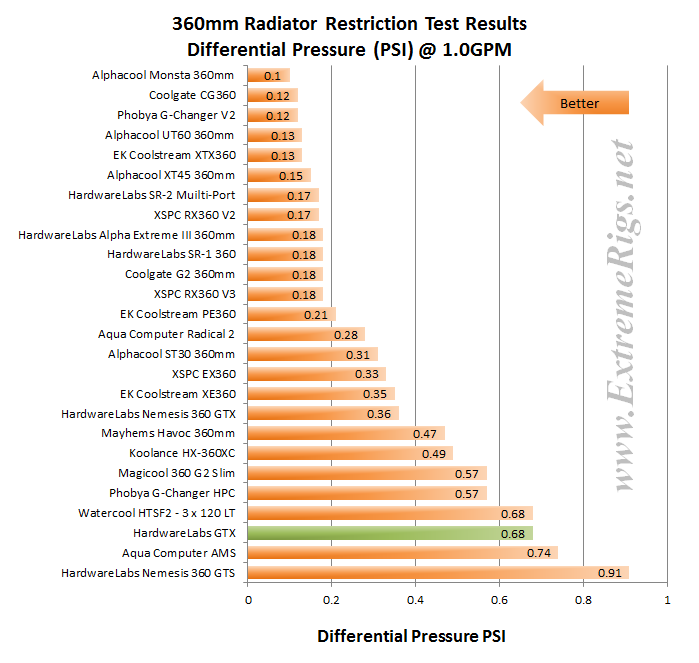
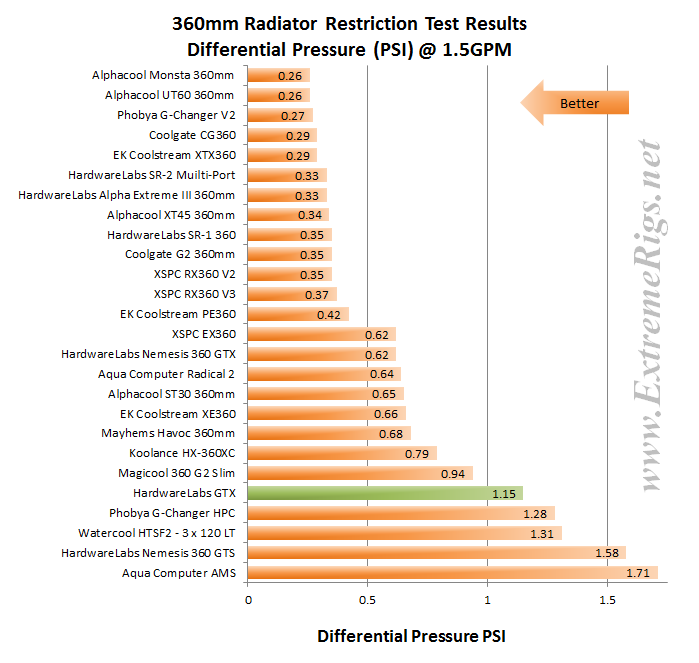



[…] Hardware Labs Black Ice® GTX 360mm Radiator Review […]
Thanks for the review again.
I think that the issue of screw protectors again, seems to be a design flaw. This is a bigger problem with the GTX 360 than other radiators simply because it is a radiator designed for high rpm fans. By nature, you are far more likely to use 38mm fans with such a radiator in push pull for the added static pressure.
Otherwise, it’s a solid radiator.
I would love to see a “Monster” radiator with 20 fpi and a similar design, but I suspect it would be a niche product.
Keep in mind that the GTX is an older model and that what we now consider important features were not always incorporated a few years ago. The current generation of HWLabs offerings all feature protection plates.
If I am not mistaken though the Black Ice GTX Gen 2 though (the variant for high rpm fans in push pull) still does not have screw protectors.
The HW Labs site is currently down so I cannot look it up.
Hi, which fans can use with this radiator?
Any 120mm fans would work – but if you’re buying this rad we would assume it’s to make use of it’s higher performance with highspeed fans. So something in the 2000+RPM is probably the target.
this rad i already have it, can you suggest me 6 fan with low noise?
Thanks in advance
There is a definite intangible when it comes to fan noise. That intangible is the “ear of the beholder.” The quality of sound may not be the same to one listener as to another. This becomes more true when you start moving up to higher speed fans. Another thing to think about, if a fan is tested to emit 29 decibels of sound at 1500 RPM and you need 6 of these fans, each fan adds to the overall noise total. It is not linear, so not 29 dba * 6, it is more of a percentage. Throwing a number out there for sake of example, 6 fans together may emit a constant 38 dba at 1500 RPM. Mounting the fans can cause the noise quality to change. To answer your question with F_F target RPM (not in a specific order): Dark Side Gentle Typhoon 2150 RPM, Noctua NF-F12 Industrial 2000/3000 RPM, Noiseblocker NBe-Loop B12-P / B12-3 & B12-4, EK Vardar F4-120/120ER & FF5-120. A starting place at least.
Comments are closed.